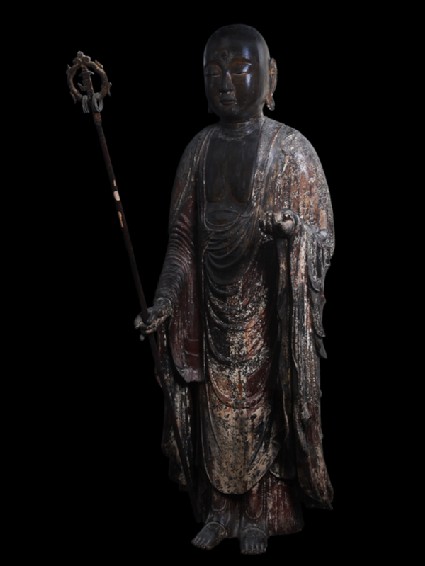Browse: 6 objects
- Reference URL
Actions
Figure of the bodhisattva Jizō
-
Description
The Buddhist figure Jizō is a special protector of children, travellers and women. Jizō is an example of a bodhisattva – enlightened beings who devote their lives to freeing others from suffering. Bodhisattvas are not worshipped, but inspire others to reach enlightenment.
Jizō is usually shown as a monk with a shaven head and pilgrim’s robes, carrying a staff with metal rings that jingle to warn insects of his approach. Jizō also carries the bright jewel of Buddhist truth, a symbol of the endless power of Buddhism. He has a third eye on his forehead and elongated ears, both symbols of enlightenment.
-
Details
- Associated place
- Date
- 16th century (1501 - 1600)
- Material and technique
- wood, with carved decoration, and traces of lacquer and gilding
- Dimensions
- 160 x 65 x 75 cm max. (height x width x depth)
- Material index
- Technique index
-
covered › metallized › gilded
- Object type index
- No. of items
- 1
- Credit line
- Presented by M. Georges van Houten, in memory of his wife Anne Suzanne, 1961.
- Accession no.
- EA1961.122
Glossary
lacquer
-
lacquer
Chinese and Japanese lacquer is made from the sap of the lacquer tree, which is indigenous to Eastern China. It is applied to wood as a varnish or for decorative effect. In India and the Middle East, lacquer is made from the deposit of the lac insect.
Location
Objects are sometimes moved to a different location. Our object location data is usually updated on a monthly basis. Contact the Jameel Study Centre if you are planning to visit the museum to see a particular object on display, or would like to arrange an appointment to see an object in our reserve collections.
Galleries
© 2013 University of Oxford - Ashmolean Museum



